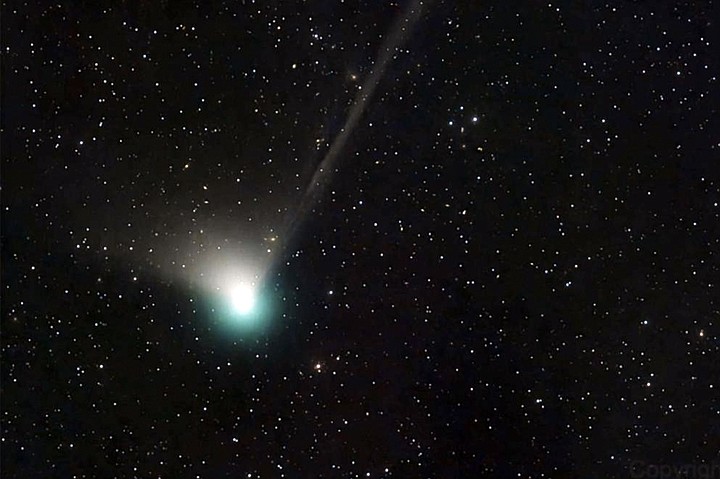 Facebook
Facebook
 X
X
 Instagram
Instagram
 TikTok
TikTok
 Youtube
Youtube

Ornamental Pear Trees are bursting into bloom all over town. The thousands of white blossoms appear in sheets and clusters, rather like snow when viewed from a distance. Nice specimens can be seen along Lake Murray Boulevard, along Clairemont Mesa Boulevard between Highway 163 and Interstate 15, and in parts of Downtown San Diego.

Ground Hog Day arrives Wednesday, February 2. If the sleepy woodchuck sees his shadow, so the story goes, he’ll hole up for another six weeks of winter cold. None of this means much in San Diego, where a February warm spell can easily push the thermometer into the 80s.
The Sun Strides North in February, swinging higher across the sky each successive day. Already quite noticeable is the change in the time of sunset, currently almost a minute later per day, and sunrise, currently almost a minute earlier per day.

A “Green Comet” will be passing closest to Earth on February 1 and 2. Neither the tail nor the color will be visible to the human eye; only long-exposure astrophotography will reveal them. There is, however, a slim chance of spotting it with the help of a clear night far away from cities and any other light pollution. A few hours before dawn on February 1 or 2, look to the North near Polaris and you might see a round, faint ball of white fuzz. That my friends, is the Green Comet. Named “C/2022 E3” or “ZTF” for short, the comet was discovered last year at the Palomar Mountain Observatory; it visits us only once every 50,000 years. The green color is due to the comet’s rare carbon-to-carbon molecular bond being ignited by ultraviolet light as it passes near the sun.


Ornamental Pear Trees are bursting into bloom all over town. The thousands of white blossoms appear in sheets and clusters, rather like snow when viewed from a distance. Nice specimens can be seen along Lake Murray Boulevard, along Clairemont Mesa Boulevard between Highway 163 and Interstate 15, and in parts of Downtown San Diego.

Ground Hog Day arrives Wednesday, February 2. If the sleepy woodchuck sees his shadow, so the story goes, he’ll hole up for another six weeks of winter cold. None of this means much in San Diego, where a February warm spell can easily push the thermometer into the 80s.
The Sun Strides North in February, swinging higher across the sky each successive day. Already quite noticeable is the change in the time of sunset, currently almost a minute later per day, and sunrise, currently almost a minute earlier per day.

A “Green Comet” will be passing closest to Earth on February 1 and 2. Neither the tail nor the color will be visible to the human eye; only long-exposure astrophotography will reveal them. There is, however, a slim chance of spotting it with the help of a clear night far away from cities and any other light pollution. A few hours before dawn on February 1 or 2, look to the North near Polaris and you might see a round, faint ball of white fuzz. That my friends, is the Green Comet. Named “C/2022 E3” or “ZTF” for short, the comet was discovered last year at the Palomar Mountain Observatory; it visits us only once every 50,000 years. The green color is due to the comet’s rare carbon-to-carbon molecular bond being ignited by ultraviolet light as it passes near the sun.
Comments